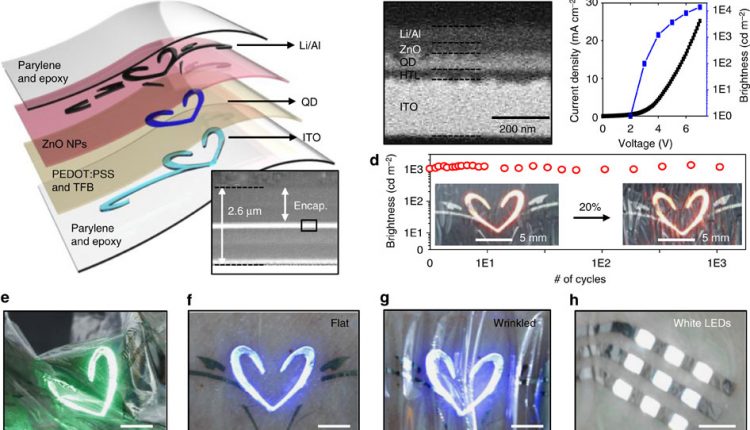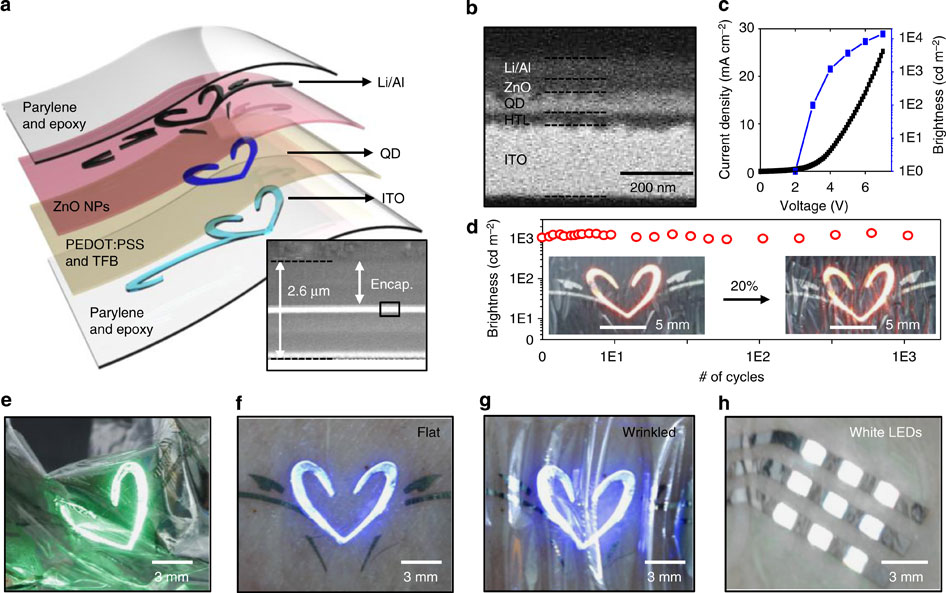
A team of researchers from the Institute for Basic Science (IBS) and Seoul National University, has developed an ultra-thin wearable quantum dot light emitting diodes (QLEDs).

The electronic tattoo is based on current quantum dot light emitting diode (QLED) technology. Colloidal quantum dot (QLED’s) have attracted great attention as next generation displays. The quantum dots (QDs) have unique properties such as the color tunability, photo/air stability, and are printability on various substrates. The paper-thin device can be applied to human skin like a sticker.
The high performance red, green, and blue QLED array has resolutions approaching 2,500 pixels per inch. This resolution is far superior to other light emitting devices and displays on the market today including ones used in the latest smartphones.
The technique is readily scalable over large area. Devices are adaptable to deformed states and thereby built on the unconventional curvilinear substrates including surfaces of various objects. Further mechanical deformations, such as stretching or wrinkling, are also adopted in this technology, which enables QLEDs on the human skin.
This breakthrough highlights new possibilities for integrating high-definition full color displays in wearable electronics.
